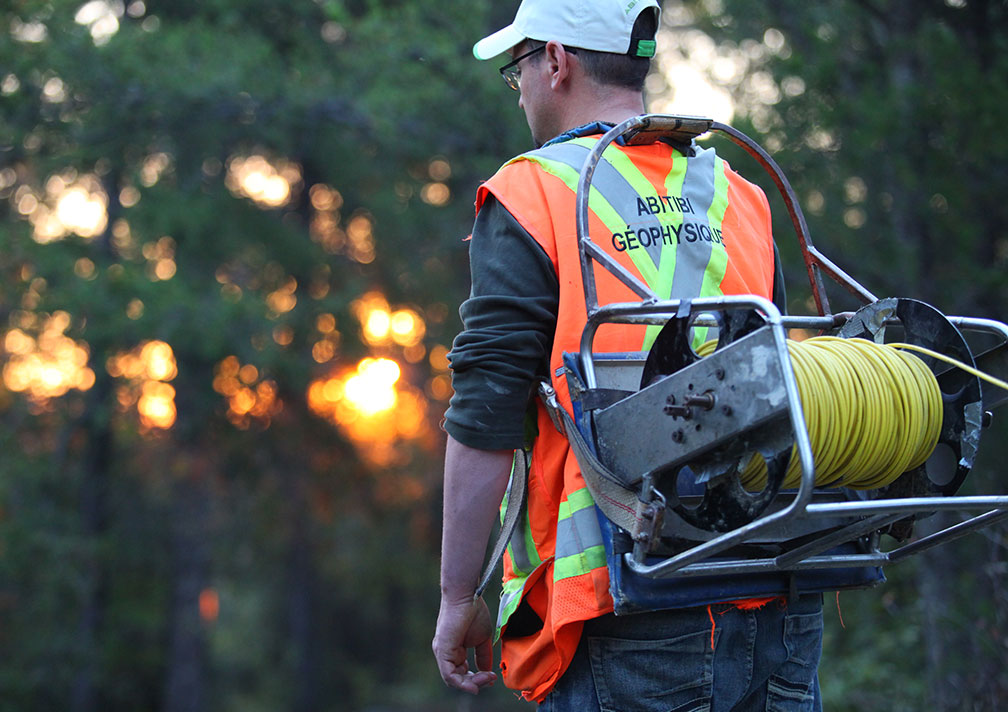Borehole IP
All of the solutions offered benefit from 2D and 3D processing and inversions to facilitate the interpretation of the surveys and to enable the accurate identification of drill targets. Discover mineralization in between your boreholes.
APPLICATIONS IN MINERAL EXPLORATION
-
Detection of disseminated metallic luster minerals (veins or gold structures, etc.).
-
Detection of disseminated sulphides or veinlets surrounding a massive sulphide deposit.
-
Discrimination between non-mineralized conductors (faults, shear zones, etc.).
-
Detection of low or non-conductive solid sulphides (rich in sphalerite, discontinuous mineralized strips, isolated sulphide grains, stockwork, etc.).
-
Mapping of alteration zones and structural elements controlling mineralization (porphyry copper systems).
-
Mapping of clay minerals associated with kimberlites.
-
Resistivity mapping to determine alteration or depth of a basin.
-
Selection of the best electrode configuration for recognition, depth of penetration or detailed mapping of targets.
Measurement of the intrinsic resistivity and chargeability of the host rock to better plan a IP surface survey or a drilling program.
Facilitate the quantitative interpretation of these surveys.
Evaluation of the off-hole extension of a mineralized zone.
Innovations: H2H-3D-IP®, OreVision, and DasVision.

